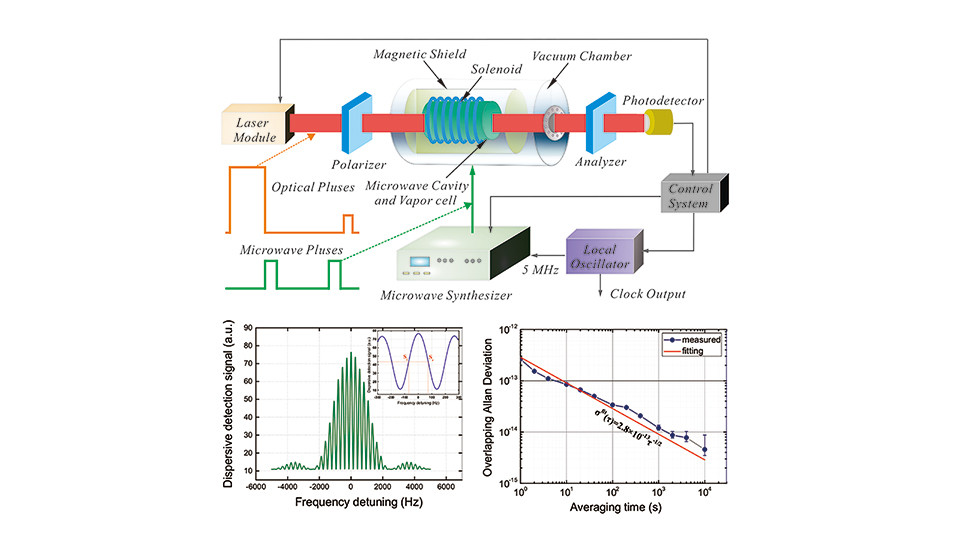
Considered to be the most stable frequency standard for timekeeping, atomic clocks are crucial components in global navigation systems and international communication services. Among the different types of atomic clocks, pulsed optically pumped (POP) atomic clocks provide an option for applications that need to be small and lightweight while maintaining frequency stability.
In a continued effort to improve the frequency stability of a POP vapor-cell rubidium atomic clock, Shen et al. developed a compact optical module, which consisted of a distributed Bragg reflector (DBR) laser and an acousto-optic modulator.
“Atomic clocks employ a quantum mechanical system as a ‘pendulum’ where the frequency of the local oscillator is locked to the transition between atomic energy states,” said author Jianliao Deng. “The accuracy of the atomic clock depends on the determination accuracy of the center of the atomic transition and the stability of the center frequency itself.”
By sealing the system under vacuum along with two heaters, the authors were able to reduce influence from environmental factors such as temperature fluctuations and the barometric effect. The resolution of the servo control voltage was also improved using a custom hardware platform.
“The resonance frequency of the atomic clock is sensitive to the fluctuations of many parameters, making the optimization of the medium- to long-term frequency stability of a laser-based vapor-cell atomic clock, such as a POP clock, challenging but also urgently required,” said Deng.
A frequency stability of 4.7×10-15 at 104 seconds was obtained for the clock, which is comparable to a state-of-the-art POP rubidium clock.
The researchers plan to test the frequency stability of their clock beyond the 104 s range and further reduce its temperature sensitivity.
Source: Scilight
https://aip.scitation.org/doi/10.1063/10.0001164